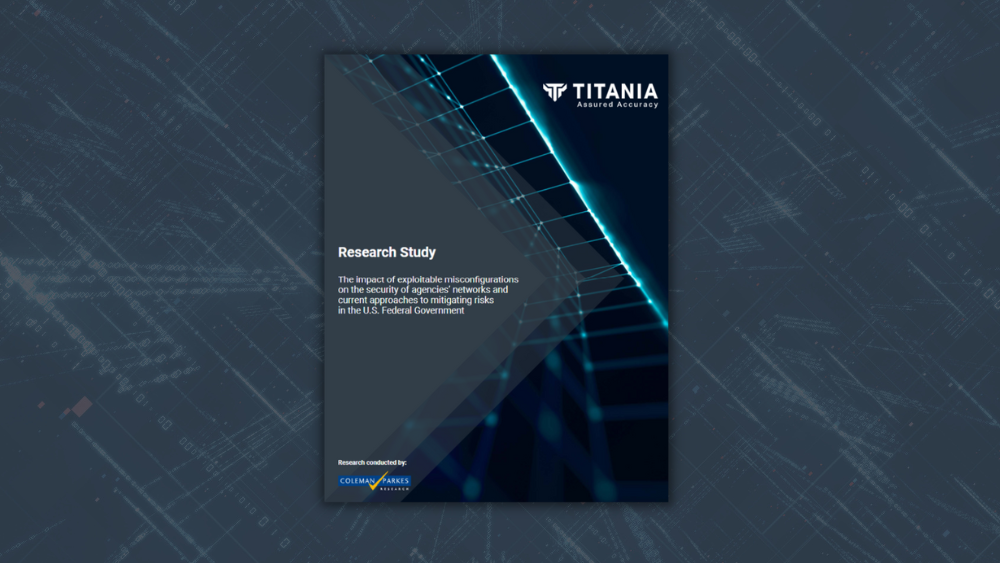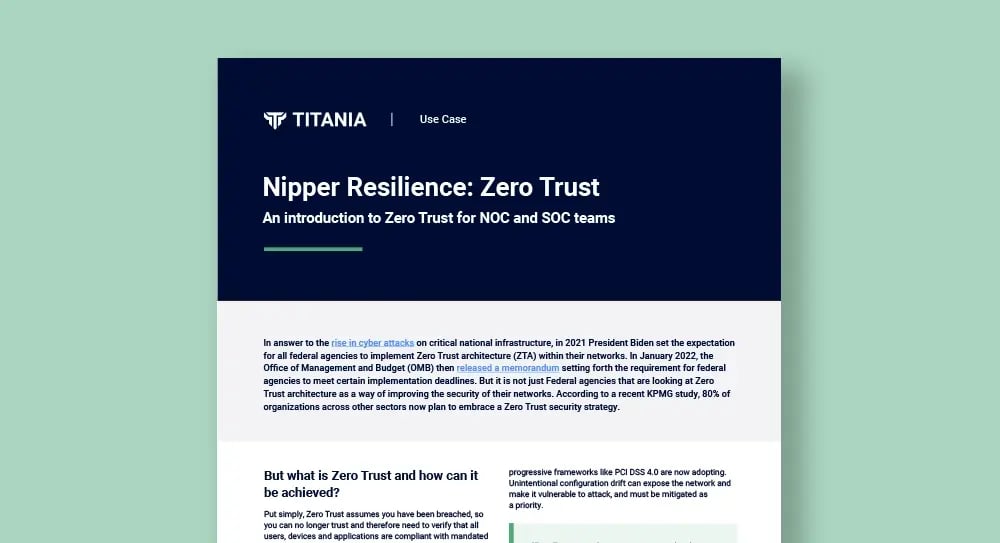Ready, recoverable, resilient networks
Zero Trust Security
Continuously verify that networks are adequately segmented
ZT Network Security Assurance, at Scale.
Network configurations are fundamental to implementing a Zero Trust security model, as they establish the baselines for strict access controls and continuous verification.
Proper segmentation, IP and CDIR whitelisting, and device rules help limit lateral movement within the network, ensuring that no user or device is trusted by default—even if they are inside the perimeter, where 80% of network traffic exists.
Which is why Titania solutions are designed to detect every change to router, switch and firewall configurations and proactively assess them for impact to the network and any indicators of compromise (IOCs). Making them an essential component of the ZT tech stack for defense and critical sectors that have adopted the Zero Trust mindset.
Assess Zero Trust Readiness
Determine network security posture and identify gaps that require remediation to implement Zero Trust.
Establish Zero Trust Architecture Baselines
Verify vendor hardening guides and organizational/ regulatory security policies have been enacted.
Assure Zero Trust Segmentation
Minimize risk of privilege escalation and unauthorized lateral movement with continuous configuration monitoring and alerts to IOCs.

Configuration Security Fundamentals
Stopping configuration drift before it compromises.
Federal agencies face several challenges as they transition towards Zero Trust. Recent research highlights the current approach to configuration security is a major one.
Adopt a ‘Never trust, always verify’ approach
Validate the security of every router, switch, and firewall, every day, with Nipper Resilience
Establish Zero Trust Baselines
Establish a Zero Trust Architecture baseline for network devices with a readiness assessment, then continually monitor configurations to ensure devices remain secure.


Evidence Continuous Compliance with STIGs
Determine the compliance state of every network device, after every configuration change, with ‘pass/fail’ evidence of compliance with vendor hardening guides and security controls.
Assure Zero Trust Segmentation
Continuously monitor that networks are divided into smaller, isolated segments to limit lateral movement of threats, and report posture based on critical segmentation.


Enforce Zero Trust Policy
Enforce strict access controls between segments, ensuring that if an attacker compromises one segment, teams are alerted, and the attacker is unable to easily move to other parts of the network.
Monitor Real-time Network Exposure
View and remediate misconfigurations through an attacker’s lens to help prevent incidents, respond to the most critical ones first according to industry-specific attack vectors, and analyze levels of compromise.

Nipper Resilience continually assesses whether network segments are correctly segmented for only approved users, IPs and CDIR whitelists, and automatically alerts you to any violations.
Explore Related Resources

The transition to zero trust: How prepared are federal agencies?
ZTA deadlines are fast approaching: How far have federal agencies got with the implementation of their zero trust strategies?

The impact of exploitable misconfigurations on network security
New report reveals U.S. Federal Government exposed to significant cybersecurity risks due to exploitable network misconfigurations.

What is Zero Trust and how can it be achieved?
An introduction to Zero Trust for NOC and SOC teams

Need a scalable and proactive way to:
- Detect IOCs including privilege escalation and unauthorized lateral movement?
- Validate the security of all routers, switches and firewalls after every configuration change?
- Assure compliance with DISA STIGs and NIST SP 800-53?